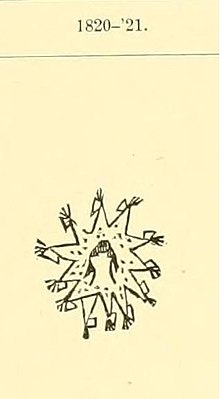Tongue River Massacre (1820)
190 The intertribal conflict between the Cheyenne and the Crow predated the arrival of whites in the Yellowstone and Powder River areas.[2]: p.
Several Lakotas, aided by the Cheyenne, killed all the men in a Crow camp with 30 tipis and took the women and children captive.[4]: p.
23 To avenge the loss of so many young men, the whole Cheyenne tribe carried its sacred arrows, Mahuts, against the Crow the next spring.
The Cheyenne and the Lakota realized they were discovered, and the warriors quickly prepared to make an attack on their foes.
130 They killed all the old men, captured the horse herds, took the women and children captive and reduced the camp to rubble.[5]: p.
190 [7]: p. 168 Due to the meager sources, it is difficult to name all war leaders and warriors involved in the fighting, provide exact figures of the strength of the camps, or the number of casualties.
179 With the 1820 massacre, the Cheyenne and Lakota prevented themselves from ever becoming allies of the Crow, as they tried later during Red Cloud's War against the whites in the 1860s.[8]: p.
91 The years following the devastating defeat resulted in attacks of revenge by the Crows, which the Cheyennes counter-revenged.[5]: p.

